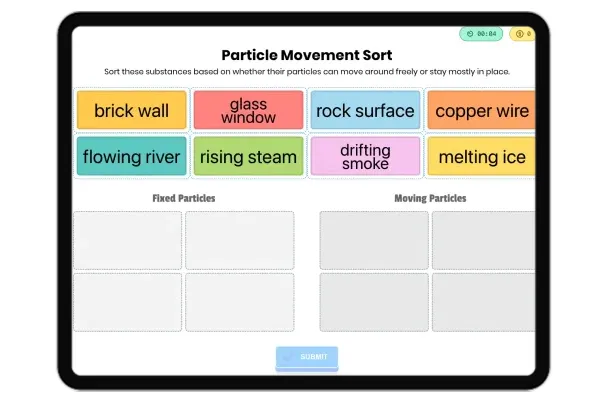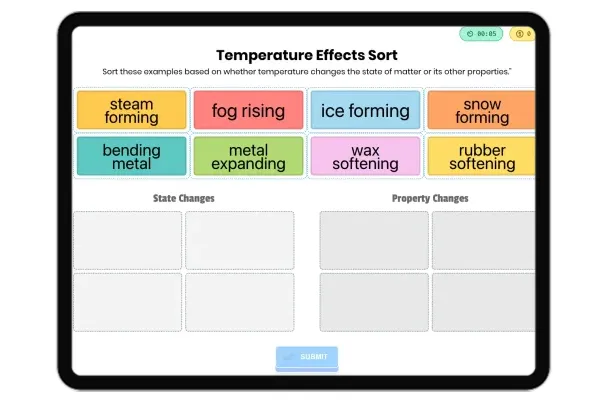Changes in Temperature: What Happens Next? Game
Premium Resource
Grades
1
2
3
4
5
PRINT+DIGITAL RESOURCE
This learning resource is available in interactive and printable formats. The interactive worksshet can be played online and assigned to students. The Printable PDF version can be downloaded and printed for completion by hand.Sort examples based on outcomes of temperature changes.
Changes Reversed by TemperaturePermanent Changesmelted chocolatefrozen waterheated metalfried potatosteamed vegetablesburned candlebaked breadcracked eggABOUT THIS GAME
In 'Changes in Temperature: What Happens Next?,' students explore examples of how heating or cooling materials causes changes. They categorize examples such as frozen water and baked bread into 'Changes Reversed by Temperature' and 'Permanent Changes,' fostering an understanding of chemical and physical reactions.
Publisher:
Workybooks
Written by:
Workybooks Team
Illustrated by:
RELATED TAGS
temperature changes
reversible effects
permanent changes
NGSS chemical reactions
heating and cooling
science activity




















